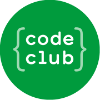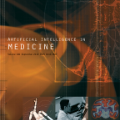Place recognition is a critical and challenging task for mobile robots, aiming to retrieve an image captured at the same place as a query image from a database. Existing methods tend to fail while robots move autonomously under occlusion (e.g., car, bus, truck) and changing appearance (e.g., illumination changes, seasonal variation). Because they encode the image into only one code, entangling place features with appearance and occlusion features. To overcome this limitation, we propose PROCA, an unsupervised approach to decompose the image representation into three codes: a place code used as a descriptor to retrieve images, an appearance code that captures appearance properties, and an occlusion code that encodes occlusion content. Extensive experiments show that our model outperforms the state-of-the-art methods. Our code and data are available at https://github.com/rover-xingyu/PROCA.
翻译:定位识别对于移动机器人来说是一项关键和具有挑战性的任务,目的是从数据库的查询图像中检索在同一地点拍摄的图像。 现有方法往往失败,而机器人在封闭(例如汽车、公共汽车、卡车)和变化外观(例如照明变化、季节变异)下自动移动。 因为它们将图像编码为只有一个代码, 将图像的外观和封闭特征连接在一起。 为了克服这一限制, 我们提议PROCA, 这是一种将图像表达方式分解成三个代码的不受监督的方法: 一种用于检索图像的描述符的位置代码, 一种捕捉外观属性的外观代码, 以及一种编码封隔异内容的隐喻代码。 广泛的实验显示, 我们的模型超越了最新技术的方法。 我们的代码和数据可以在 https://github.com/rover-xingyu/PROCA。




